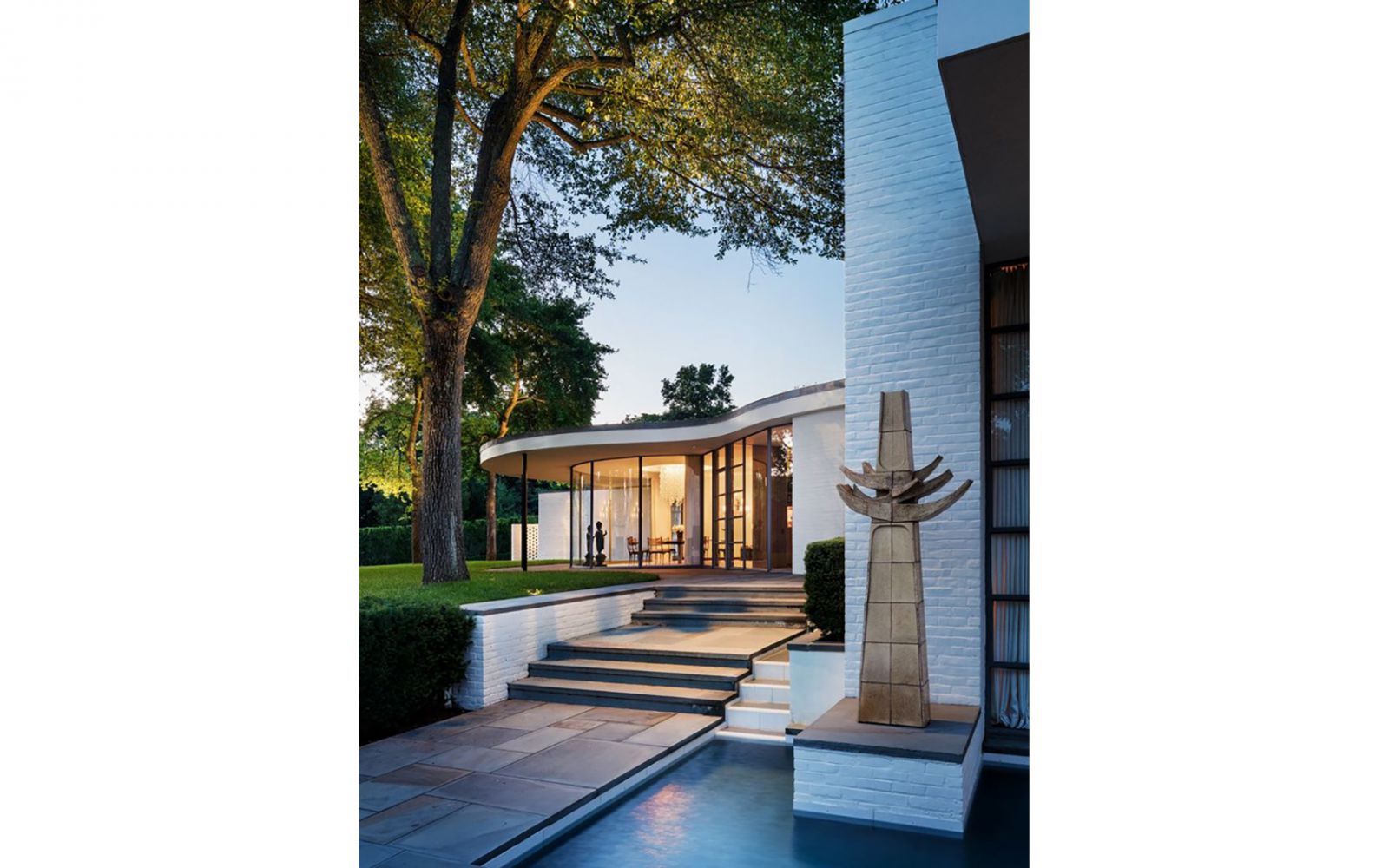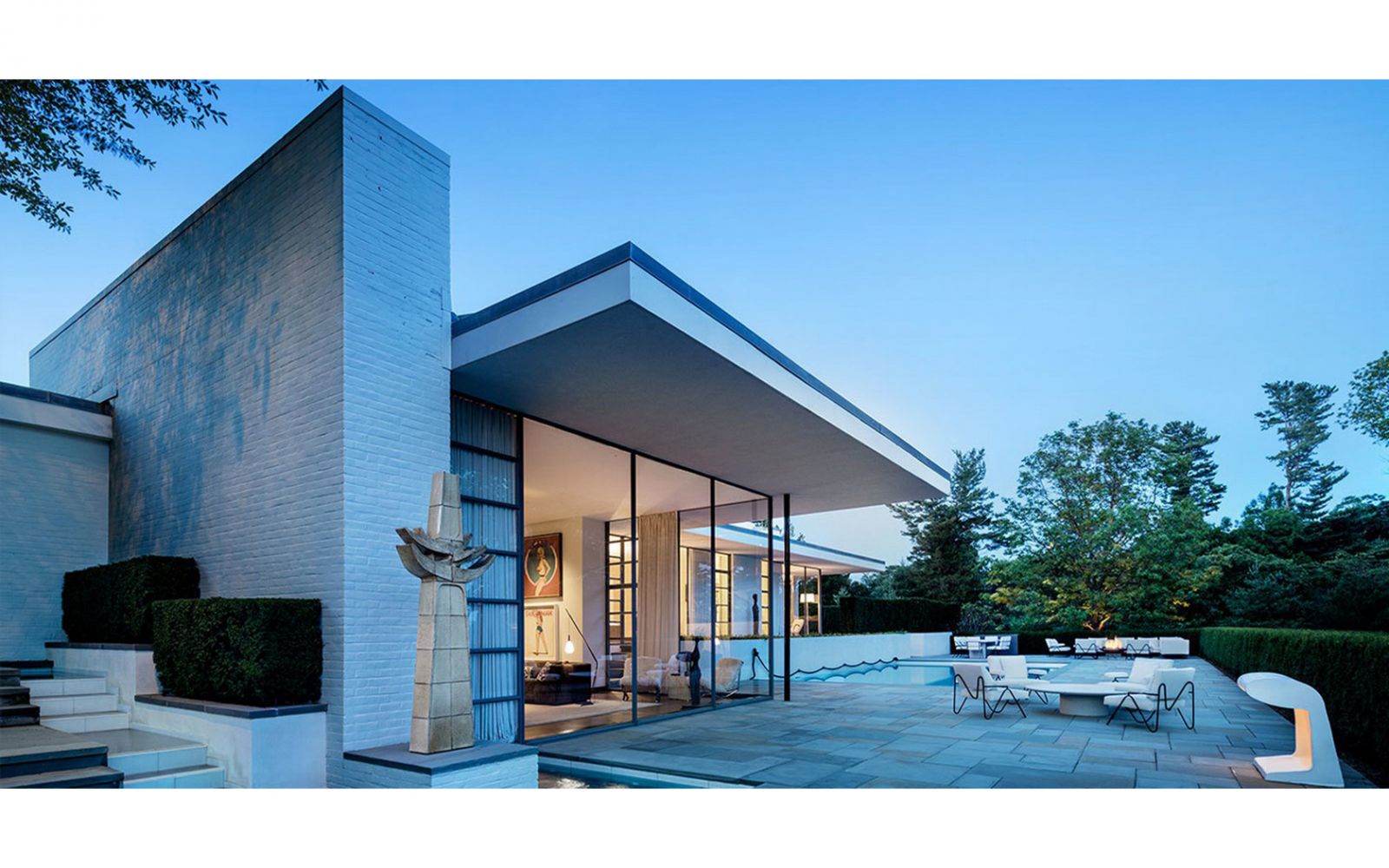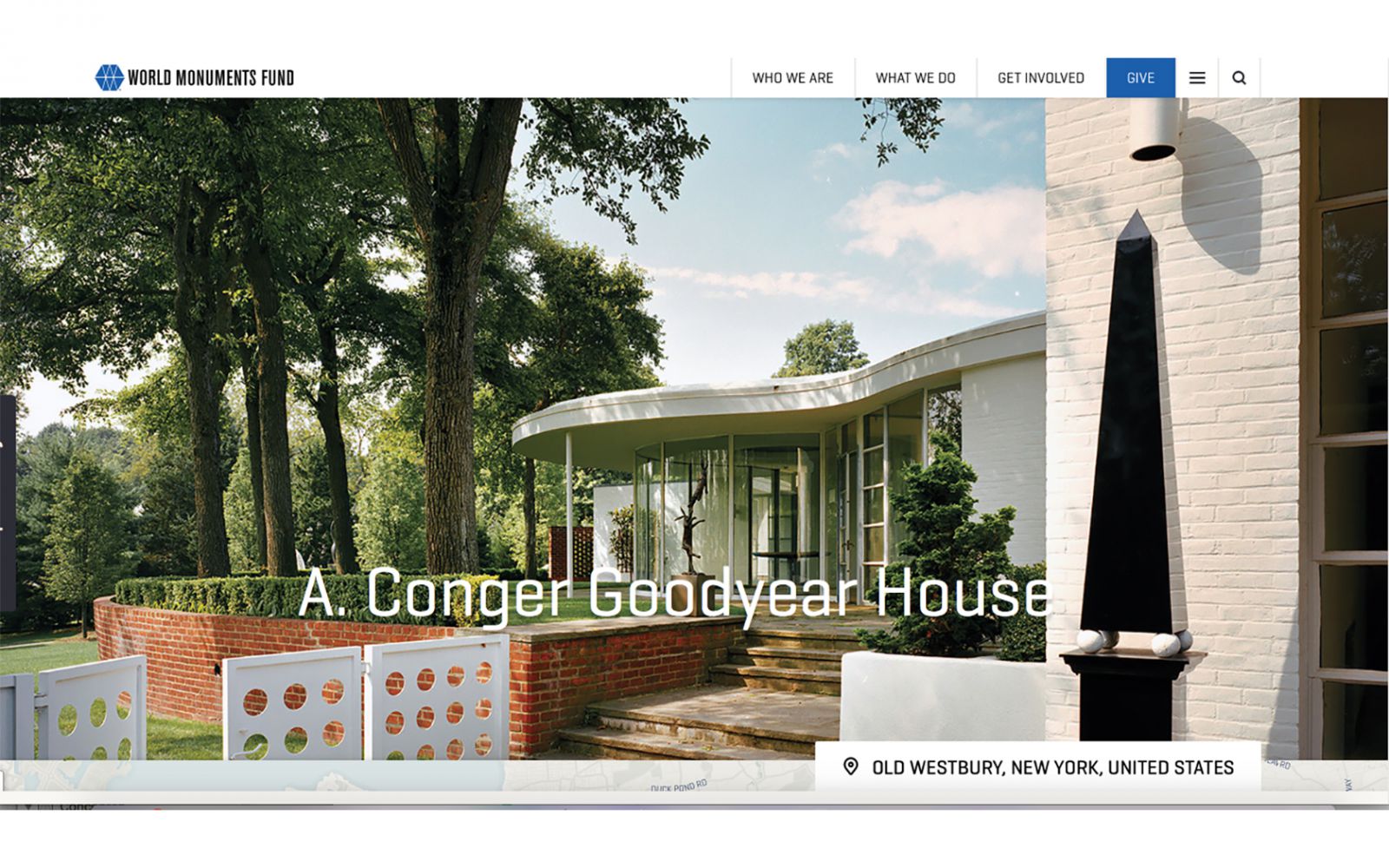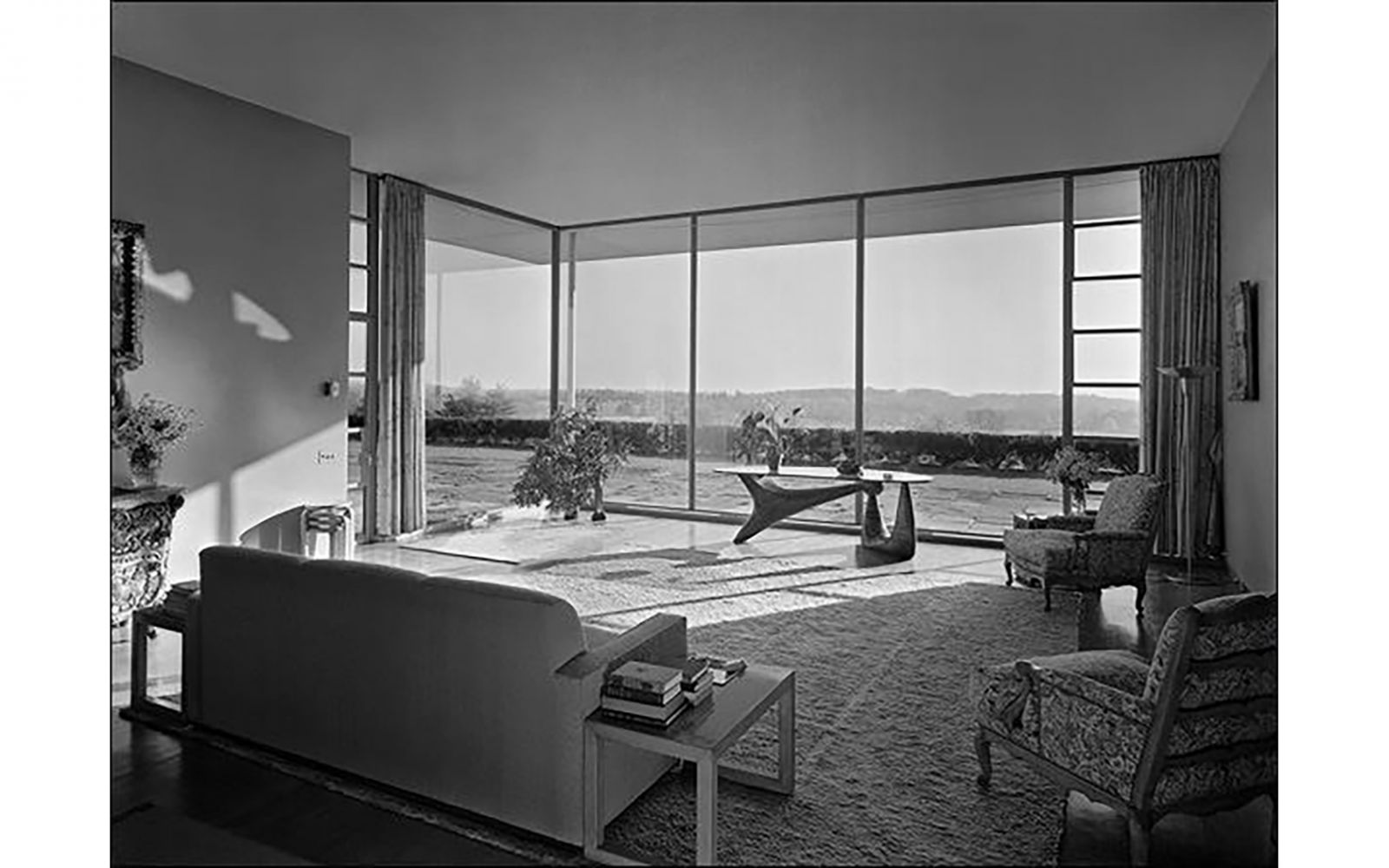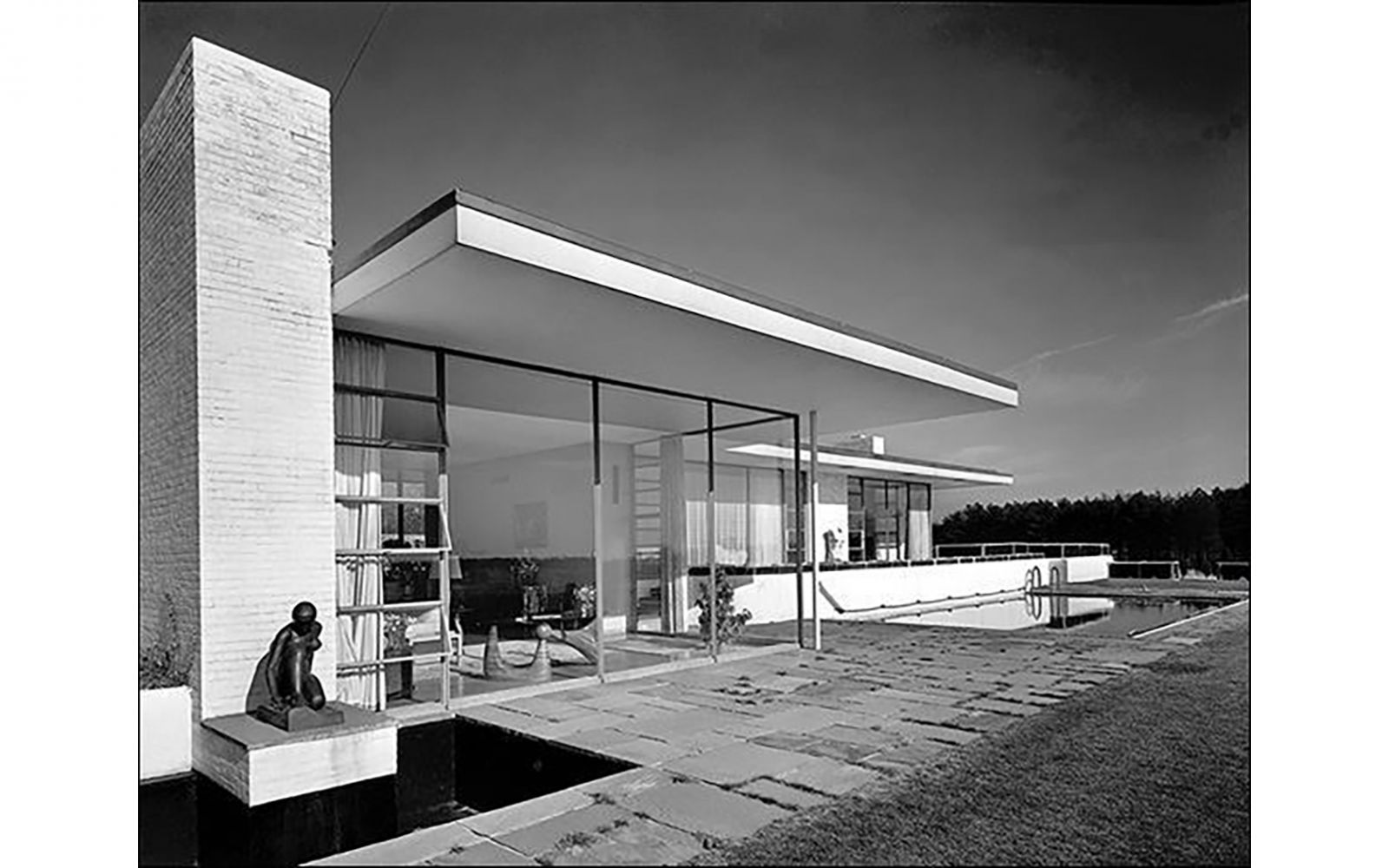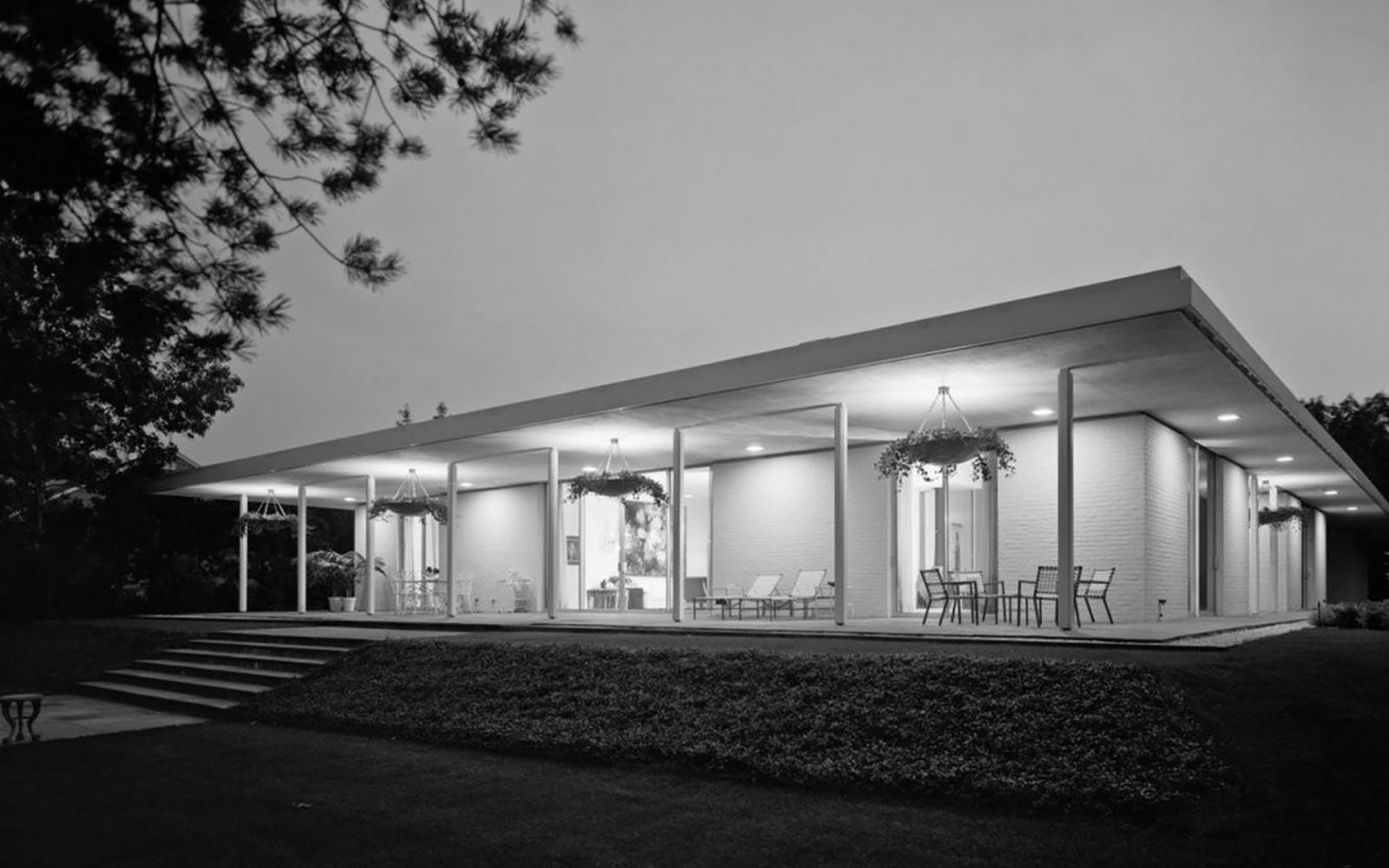A. Conger Goodyear House
Architect: Edward Durell Stone
Year of completion: 1938
Location: Old Westbury, NY, USA
Saved from demolition in 2005
Latest update 5 December 2020
Anson Conger Goodyear House Old Westbury, New York. Photos black & white: Ezra Stoller © Esto. Colour photos: Steven Harris Architects LLC.
A. Conger Goodyear House
The A. Conger Goodyear House has been dubbed ‘one of the most important Modernist houses of its era in the Northeastern United States’, by World Monuments Fund (WMF). In 2001, the house was put on WMF’s Watch List of 100 Most Endangered Sites. The house was built in 1938 in the International style and designed by architect Edward Durell Stone (1902 – 1978) for businessman and philanthropist Anson Conger Goodyear, who was a founder and the first president of the Museum of Modern Art. The house has 6,000 square feet of space, five bedrooms and five and a half baths and currently sits on a five-and-a-half-acre lot on a barren hilltop site on Long Island.
The home has been described as ‘a remarkable balancing act between the austerity of the then·developing high modernism of Mies van der Rohe and the warm, site-oriented romantic functionalism of earlier American masters like Frank Lloyd Wright.’
Latest News
World Monuments Fund website (undated)
A. Conger Goodyear House
Threat
When Goodyear died in 1964, the home was left unoccupied until 1970, when the family donated the house to the New York Institute of Technology for use as the president's house. In 1997, NYIT sold it to Wheatley Construction Company, which had planned to raze it for new development. Brought to the World Monuments Fund by local preservationists and architectural historians, the WMF campaigned to save it, starting in 2002 when the house was listed on the 2002 World Monuments Watch. A bulldozer and a permit to raze the house were on-site at the time of the Watch announcement. WMF took the lead in the fight to save the house, which was bought in 2005 through a partnership between WMF, the Barnett and Annalee Newman Foundation, and the Society for the Preservation of Long Island Antiquities and was listed on the National Register of Historic Places. All parties worked to have the house designated as a local landmark, and most urgently, to find a buyer and ensure its long-term preservation. The fund sold it to the Modernist design dealer Troy Halterman with constrictive limitations on renovations to the interior and exterior, though the lot was reduced from 100 acres. Halterman never moved in, however, and sold it in 2007 to Eric Cohler, an interior designer who spent a purported US$2 million in renovations. The home was again sold to art and architecture collector Aby Rosen in 2011.
Architectural Highlights
It is a single-story house with a fine collection of artworks exhibited in the gallery space serving as the backbone for the house. The planning of this house is done in a way to incorporate maximum natural light inside the house and to provide extensive views to all the rooms. Formally, the house fuses Miesian minimalism with the Prairie Style of Frank Lloyd Wright, evidenced in the house’s deep overhangs. These cantilevered roof projections act as a shading device. House faces south direction with floor to ceiling glass wall. Therefore, it becomes necessary to use shading devices and cover the glass façade in summers. This is one of the best designs of Stone which serves best to its users, functionally as well as aesthetically.
The New Yorker architecture critic, Paul Goldberger, called the Goodyear home:
‘One of the most important houses built in the United States between the two world wars.’
Importance
In his 1962 memoir, The Evolution of an Architect, Edward Durell Stone wrote:
‘The site, a barren hilltop, demanded the low horizontal lines of a one-story house. Mr. Goodyear had a fine collection of modern paintings, and I decided to have a gallery serve as a "spinal column" from which all the rooms, with an expansive view to the south, opened, I employed glass walls from floor to ceiling, the ceilings continuing beyond the walls to form wide sheltering eaves. As the house faces south, the eaves were adjusted in depth so that the glass areas were shaded during the summer months, and when the sun was low during the winter months, its welcoming rays penetrated the house through the glass walls.’
Reflecting on the house’s eaves Stone writes, ‘Not only is the overhanging eave an important practical consideration, but I find it aesthetically mandatory on a house with a flat roof, satisfying visually the desire for certain aspects of the pitched roof so long associated with residential architecture.’
Robert A.M. Stern, dean of the Yale School of Architecture, told The New York Times, ‘It's one of the few great International Style houses by an American architect of the 1930s. It's a great country house as well and surprisingly luxurious in a Busby Berkeley-meets-Bauhaus kind of way.’
The A. Conger Goodyear House narrowly escaped demolition that has plagued many other contemporary buildings and survives as an encouraging example for the future of remaining modern structures that are threatened by destruction, development, or expansion.
Sources: Wikipedia.
More photos: Architectmagazine.com.
A. Conger Goodyear House
Edward Durell Stone
1938, USA

